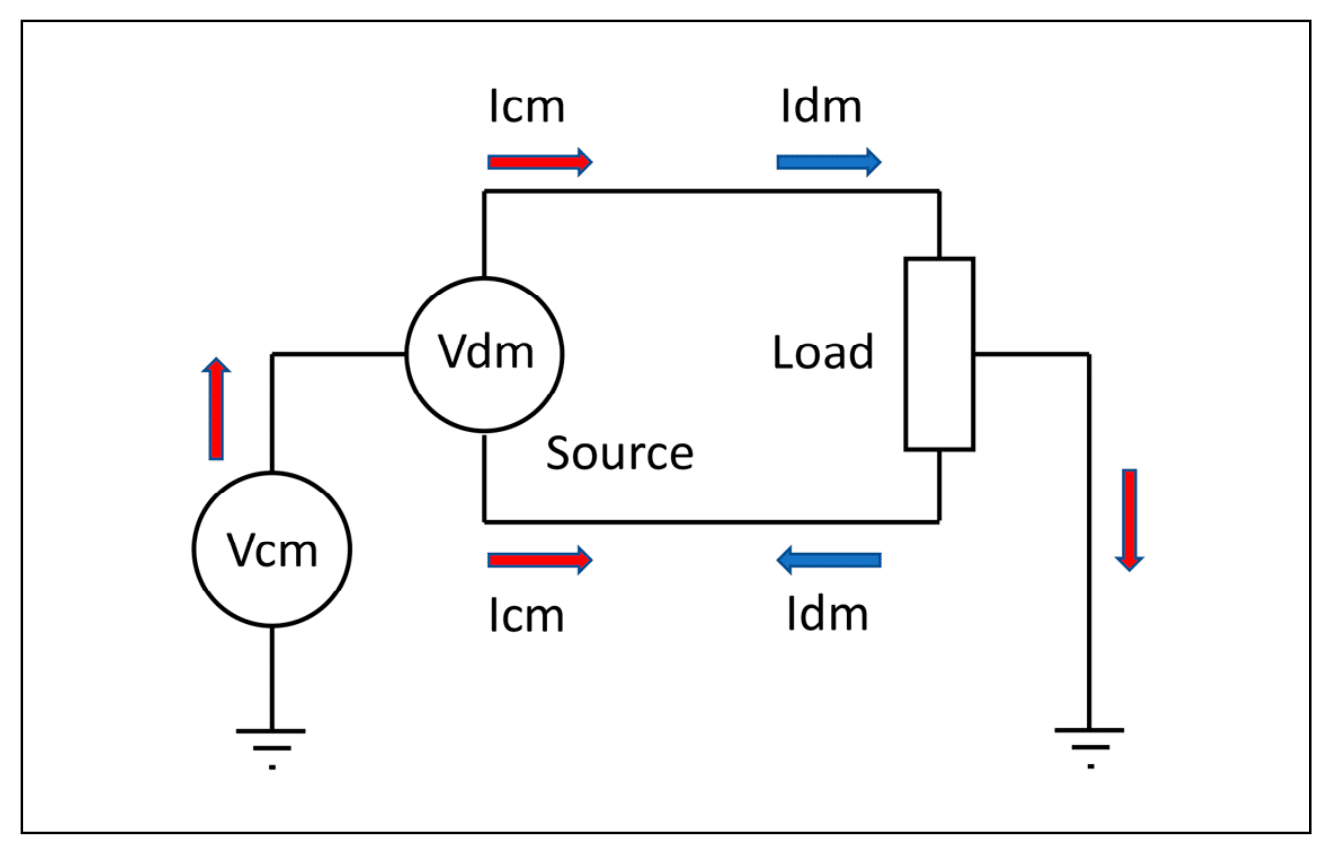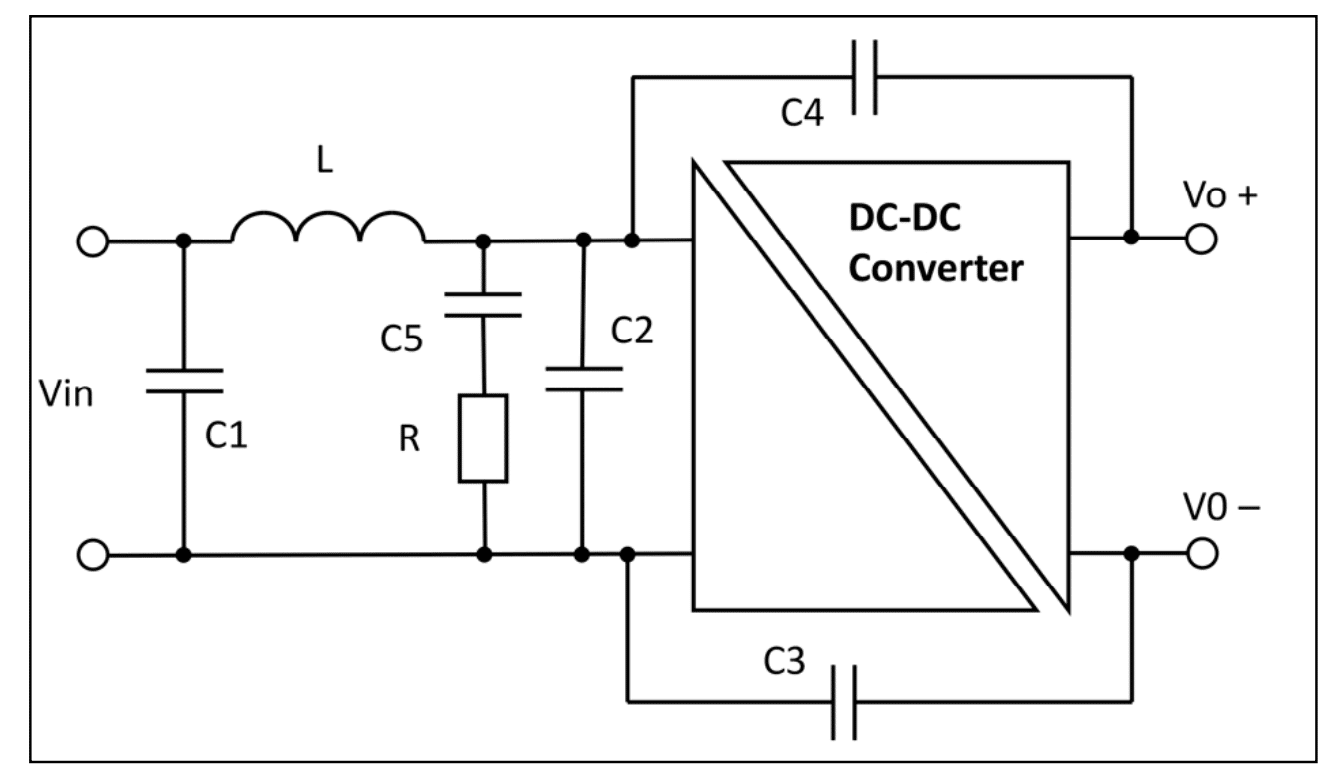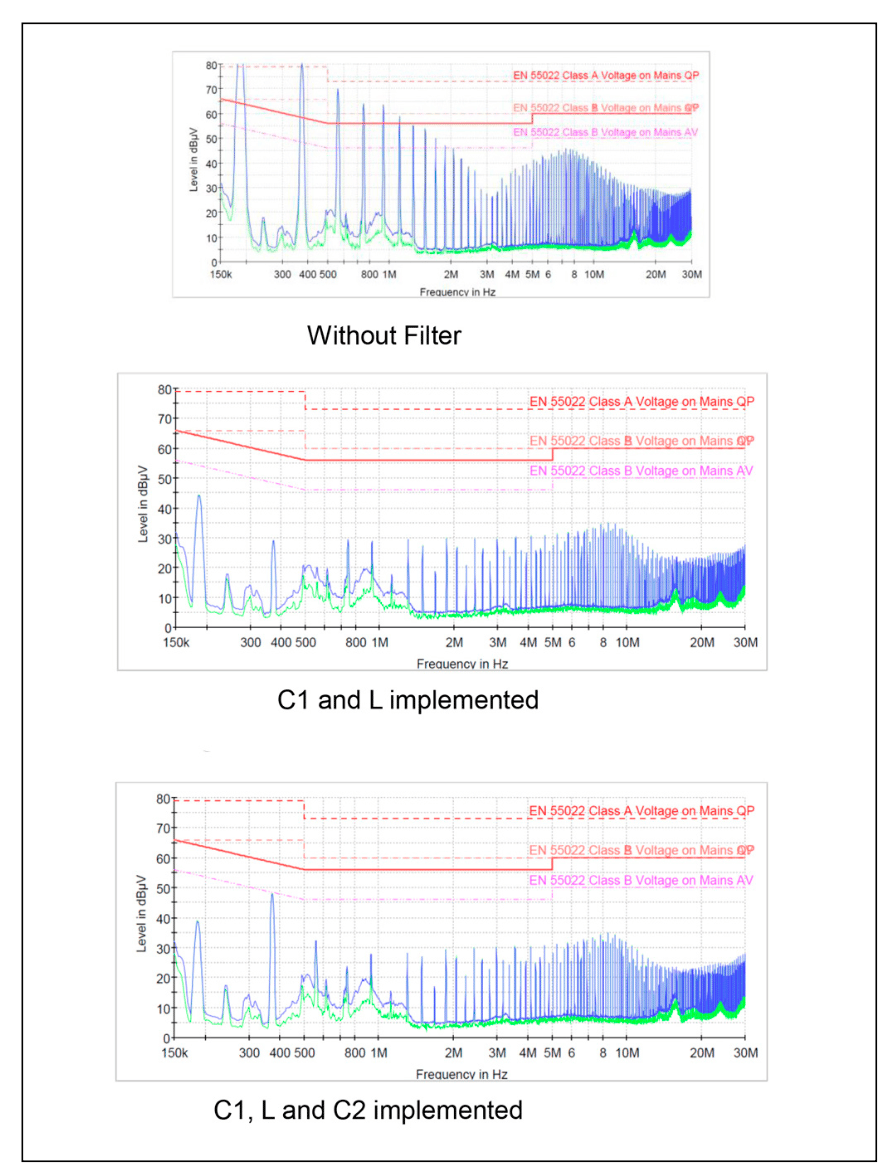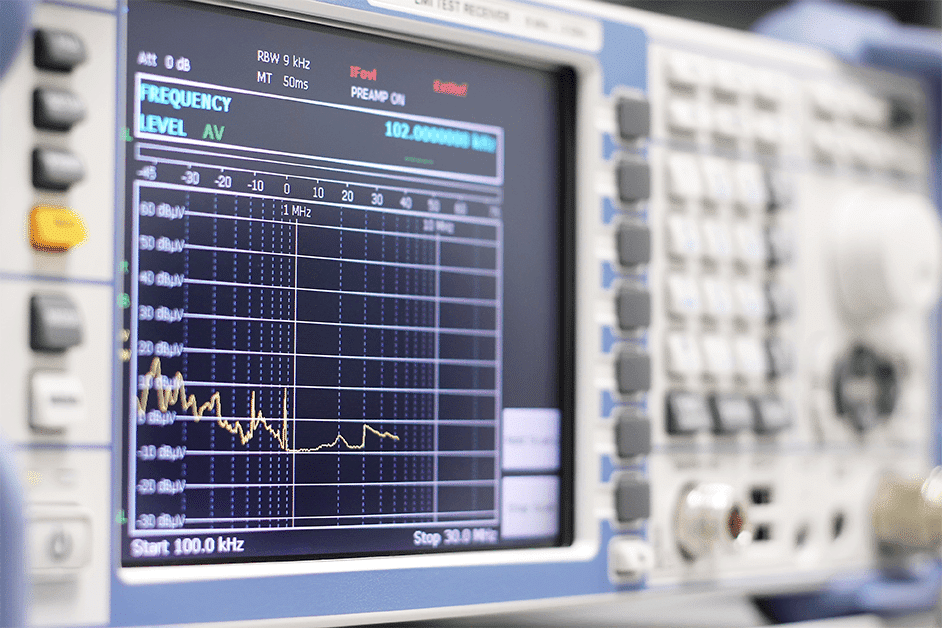Electromagnetic Interference (EMI) is always a potential problem with switched-mode power supplies, both AC-DC and DC-DC converters. Modern designs can perform well for emissions and immunity but external connections must still be correct for the best performance. Sometimes, extra filtering is necessary to meet specific application requirements. However, incorrect filter designs can make EMI worse. This article gives some guidelines for achieving the best conducted EMI performance from AC-DC and DC-DC converters including when using external filters.
Electromagnetic Compatibility (EMC) of equipment is a term covering conducted and radiated emissions, susceptibility to conducted voltage disturbances and radiated fields, and immunity to Electrostatic Discharge (ESD). Distortion of AC line current by AC-DC converters is also included. In Europe, the EMC directive 2014/30/ EU mandates that end-equipment meets harmonized standards. In this article, we look at conducted emissions from switched-mode AC-DC and DC-DC converters and how performance can be affected by filter components.
HIGH EFFICIENCY CAN RESULT IN HIGH NOISE
Engineers are familiar with the benefits of switched-mode converters – high efficiency with small size and weight, but many will also have struggled with the electrical noise they produce. Modern converter designs have however improved with better components and topologies that have inherently low noise, such as resonant types. Techniques such as ‘frequency dithering’ also help reduce emissions energy in a given measurement bandwidth. The origin of the noise is the fast switching of semiconductors, with waveform rise and fall times measured in nanoseconds, necessary for high efficiency. The high dV/dt and di/dt levels though cannot be completely contained within the converter and can appear as voltage or current noise ‘spikes’, conducted along input or output lines. From Fourier analysis, the envelope of emissions from a generic switching waveform is shown in Figure 1, illustrating that as rise/fall time Tr, Tf decreases, the bandwidth of emissions increases with an overall amplitude affected by the duty cycle of the waveform Ton/ Tp [1].

NOISE COMPONENTS
Conducted noise is of two types, Differential Mode (DM) and Common Mode (CM), which are usually present together at some level. DM noise is measured as the voltage between a power line and its return. CM noise is measured between both power lines and system ground and is normally recorded as a voltage across a defined impedance. This is because power converters tend to operate as a current source for CM noise at high frequencies. Figure 2 shows the two types diagrammatically.

DM noise is easily measured with an oscilloscope or analyzer but CM requires the use of a standard termination network, a Line Impedance Stabilisation Network (LISN). This includes the defined termination impedance and filtering necessary to isolate any effect from the upstream power source. The LISN is defined by CISPR standards, typically CISPR 22 for IT equipment, and is intended for AC-DC converter noise measurements but is often also used with DC-DCs. The LISN outputs a weighted combination of DM and CM noise so that even with no CM noise present, half of the amplitude of the DM noise is seen. This means that attenuation of both DM and CM noise types is necessary to meet the limit lines of the CISPR 22 standard and its derivative EN 55022.
DC-DC CONVERTER INPUT FILTERS
There is no common standard for noise emissions from DC-DC converters as they are normally embedded in systems that overall must meet EMC regulations. Board-mount DC-DC manufacturers incorporate at least a parallel input capacitor in the product package and the resulting noise levels are often perfectly acceptable. Occasionally lower levels are needed in the application and the manufacturer will typically recommend an L-C filter added externally to reduce DM noise, L, and C1 in Figure 3.

It might be tempting to add large value components thinking that this will give the lowest noise but this can be counterproductive: large inductance values can have high resistance, producing voltage drop and power dissipation. Magnetic saturation with high inductance can be a problem and self-resonance may be low resulting in ringing and potential overvoltage at the DC-DC input. The effect can even make the measured noise spectrum worse. Figure 4 shows the noise of a sample converter with no filter, just L and C1 fitted and then with C2 added, giving higher spectrum peaks.

Another problem that can occur is the instability of the converter control loop. This occurs when the output impedance of the filter, at its resonant frequency, is close to the input impedance of the DC-DC (which is incrementally negative – input current goes down as input voltage goes up). Middlebrook [2] investigated the effect and concluded that the output impedance of the input filter must be much less than the input impedance of the converter. This can be achieved with an extra damping circuit R and C5 in Figure 3. C5 is >>5 x C2, which may be internal to the DC-DC and R is = SQRT(L/C2). Alternatively, a lossy electrolytic capacitor has a similar effect but its capacitance and loss resistance are not as well controlled.
CM noise is often not an issue with DC-DC converters as both input and output may be grounded. If the input is floating, capacitors C3 and C4 can be added to reduce CM noise levels. However, there may be a limit to the capacitance allowable if the converter is forming part of a safety barrier to high-voltage AC. C3 and C4 values will then set the maximum AC leakage current that can flow and must be ‘Y’ safety types with the right transient voltage rating. In the extreme, two capacitors may be needed in series for the most sensitive applications such as patient-connect medical in case one capacitor fails short.
In some applications, voltage transient suppression may be needed at the DC-DC converter input. Some standards for transient levels are established, for example in the automotive and rail industries, but in other application areas, the levels are not well defined. A recent euronorn, EN IEC 61204-3:2018 ‘Low voltage switch mode power supplies -Part 3: Electromagnetic Compatibility’, is not widely accepted yet but does define some overvoltages for different application categories of DC-DC converters.
AC-DC CONVERTER INPUT FILTERS
The situation with AC-DC converters is simpler. For high-power products, there is usually a direct connection to AC mains. The converter therefore must meet the EMC directive so will have a filter fitted internally, suitable for the intended application; industrial, IT, medical, test equipment, etc. However, there is a large market for board-mounted AC- DC converters that connect to AC mains through internal tracks and wiring. The converter will often have internal filtering for the highest EMC emissions standards, (Class B) such as the RECOM RAC20-K series but sometimes products are offered meeting the lower, class A limit line. This is a cost-saving and may be sufficient, especially if the converter is supplied from AC which is already filtered elsewhere in the system. Manufacturers will suggest external filter components which will enable these parts to meet the class B limit, typically an ‘X’ rated capacitor across the AC line and ‘Y’ capacitors from both AC lines to the ground. The RECOM RAC03-GA series is an example.
For these components to be effective, they should be placed very close to the converter with a direct, low-impedance connection to ground. Remember that there are limits to values allowed: the ‘X’ capacitor for example must discharge to a safe voltage typically within one second after disconnection of the AC mains and may need a parallel discharge resistor, suitably rated. As mentioned for DC-DC converters, the ‘Y’ capacitors must not allow a dangerous leakage current to flow if the system ground becomes disconnected. The maximum current allowed can be as low as 10μA for the most sensitive medical applications, limiting capacitor values to around 100pF. Other applications allow much higher leakage currents, 3.5mA for example in IT areas, allowing higher ‘Y’ capacitor values.
System EMC performance cannot be easily predicted from the performance of individual components so compliant board-mount AC-DC converters, for example, cannot guarantee a system ‘pass’. However, manufacturers such as RECOM [3] with their wide range of system and board-mount power supply products offer the use of their in-house EMC test facilities to help their customers with pre-compliance equipment testing.
REFERENCES
1. http://www.smps.us/Unitrode.html
2. Middlebrook, R. D., Design Techniques for Preventing Input-Filter Oscillations in Switched-Mode Regulators, Proceedings of PowerCon 5, the Fifth National Solid-State Power Conversion Conference, May 4-6, 1978, San Francisco, CA
3. www.recom-power.com




